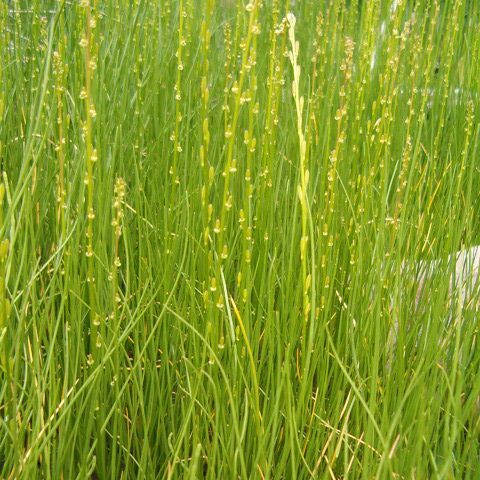Herbs, perennial or annual, rhizomatous, evident stems absent; turions absent. Leaves basal, emersed, sessile; sheath persisting longer than blade, not leaving circular scar when shed, ligulate, auriculate with scarious lobes; blade linear; intravaginal squamules scales, more than 2. Inflorescences terminal or axillary, scapose spikes, spikelike racemes, rarely solitary flowers, without spathe, pedunculate; peduncle following fertilization not elongating, not spiraling. Flowers bisexual or unisexual, staminate and pistillate on same plant; subtending bracts absent; perianth present, rarely absent; tepals 1, or 6 in 1--2 series. Bisexual and staminate flowers: stamens 1, 4, or 6, epitepalous, when 4 or 6, then in 2--3 series; anthers distinct, dehiscing longitudinally; pollen globose. Pistillate and bisexual flowers: pistils 1, 3, or 6, not stipitate, when 3 or 6, coherent or weakly connate; ovules basal, anatropous. Fruits nutlets or schizocarps. Seeds 1; embryo straight.
Herbs, of marshes or aquatic, scapiferous, with short, vertical rhizomes. Leaves mostly basal, alternate, erect, linear, sheathed at base, margin entire. Flowers hermaphroditic or unisexual and plants dioecious or polygamous; flowers small, ebracteate, in pedunculate spikes or racemes. Perianth segments 2-6(-8), in 2 series, sepaloid. Stamens 3, 4, or 6, often attached to base of perianth segments; anthers subsessile, 2-thecous, extrorse, opening by longitudinal slits. Carpels 3, 4, or 6, free or partly connate, each with 1 ovule; styles short or stigmas sessile. Fruit apocarpous or syncarpous; fruitlets separating at maturity. Seeds without endosperm; embryo straight.

